7 Solutions to extend the application of TRIZ
- Including the prevention of design risk -
Takashi Ogata, Kazuhiro Fujikawa (OLYMPUS Corporation)
at Institute of Mathematical Statistics, Tachikawa, Tokyo
7 Solutions to extend the application of TRIZ |
|
| Takashi Ogata, Kazuhiro Fujikawa (OLYMPUS Corporation) |
|
| Presented at 9th TRIZ Symposium in Japan, Held on Sept. 5-6, 2013 at Institute of Mathematical Statistics, Tachikawa, Tokyo |
|
| [Posted: Jan. 26, 2014] |
For going back to Japanese pages, press buttons.
Editor's Note (Toru Nakagawa, Jan. 23, 2014)
This paper was presented last September at the Japan TRIZ Symposium 2013. Concerning to the overview of the Symposium, please refer to the Official Home Page of the Japan TRIZ Society
and to my Personal Report
. The present paper received the 'Award of Best Presentation for You' according to the participants voting. Mr. Takashi Ogata of Olympus Corporation gave presentations 3 times since 2011 on their introduction and promotion of TRIZ and won the Awards for all the 3 presentations! The presentation slides are posted publicly in the Web site of Japan TRIZ Society
, and are reposted here in the "TRIZ Home Page in Japan" in accordance to the Authors' desire and approval for the purpose of wider publication and appreciation.
In Olympus Corporation, the authors have introduced the scientific methods like QFD, TRIZ, and Taguchi Method since 2009. From the start they tried to introduce the methods on the standpoints of engineers, so as to be quick and effective in their busy schedule, and to select and apply suitable tools depending on their purposes. At the presentation this year, they have shown 7 sequences of applying selected tools (elements in QFD, TRIZ, and TM) for different purposes. They call them '7 Solutions'. (-- In Japanese IT jargon, 'Solution' means a software system or method /process to be applied to some big user's jobs.) They describe the processes and methods in each 'Solution' and explain the basic concepts underpinning the seven Solutions.
I think this paper unique and valuable from the international viewpoints as well. Its strength is the users' standpoint to compose the methods not on the basis of 'Tools first' but 'Jobs first'. (Promoters of methods/tools, including myself, are apt to think in the 'Tools first' way.) The 'Solutions' are composed of sequences of minimal set of easy tool elements, selected to match the job purpose. Nevertheless, the seven different 'Solutions' share common basic concepts (especially based on the functionality concept) and can be applied in connection along the progress of the projects. In this manner the authors have introduced different philosophies, techniques, and methods, and have digested them to build new concise and effective ones suitable for their own purposes. (Please refer to the presentation by Hajime Kasai who guided the introduction/promotion of these multiple methods.)
--- This way of introducing different (foreign) cultures and digesting them to build a new one may be a typical approach for cultural creation in Japan. I work similarly in a sense, when I introduced TRIZ and USIT, extended USIT further, and am now proposing the general methodology of creative problem solving (CrePS).
I wish that the present paper are useful and stimulative for many readers in Japan and in the world.
| Top of the page | Abstract | Slides | Slides PDF |
Kasai's paper |
Japan TRIZ Symp. Report (Nakagawa) |
JTS site |
Japanese page |
Abstract (Submitted on May 15, 2013)
7 Solutions to extend the application of TRIZ
- Including the prevention of design risk -Takashi Ogata, Kazuhiro Fujikawa (OLYMPUS Corporation)
9th TRIZ Symposium in Japan, held on Sept. 5-6, 2013 in Tokyo
Abstract
OLYMPUS has introduced and promoted QFD, TRIZ, and Taguchi Method as a scientific method for improving the development process since 2009. Recently, we are promoting 7 Solutions to extend the application of TRIZ to meet the needs and targets of engineers.
The 7 Solutions are as follows.
(1)Fuzzy Frontend Analysis
(2) Setting Theme
(3) Fast Cause Analysis
(4) Making Strong Patent
(5) Cost Reduction
(6) Effective Evaluation and Experiment
(7) Risk PreventionThese 7 Solutions are based on the following 3 key items for raising the efficiency of engineers.
1. Limiting the system area (handling area) from the point of view of time and space.
2. Using the functional approach for coordination of methods by thinking customer needs.
3. Selection of two idea approaches by TRIZ (Type of eradicating the problem or Type of fulfilling the desire) according to each purpose.
Presentation Slides: Slides in PDF
(26 slides, 1.3 MB)
Slides in Japanese in HTML Slides in Japanese in PDF
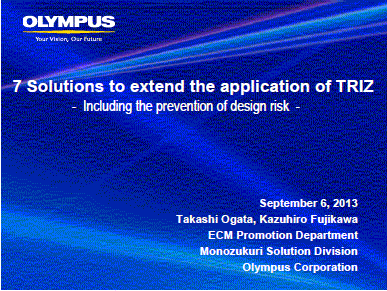

1. About Olympus
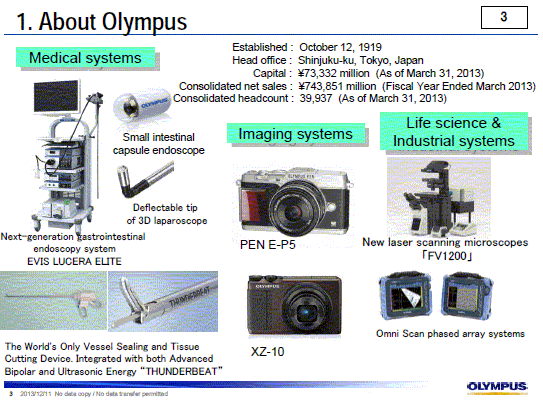
2. Promotion of scientific methods in Olympus

3. Reaction of the engineers for scientific methods

4. Aim of providing 7 solutions

5. Possibility of expansion in 7 solutions

6. 3 Key elements of connection

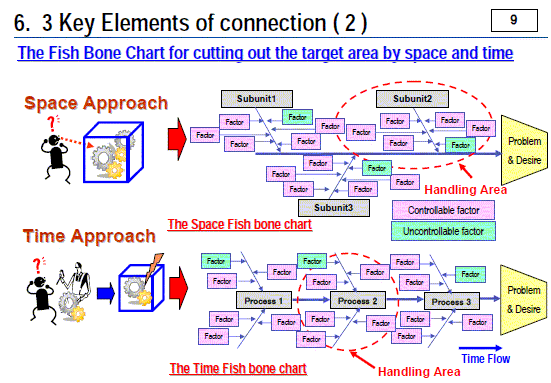

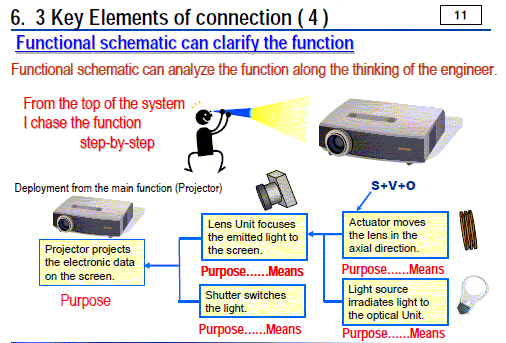

7. 7 Solutions
7.1 Fuzzy frontend

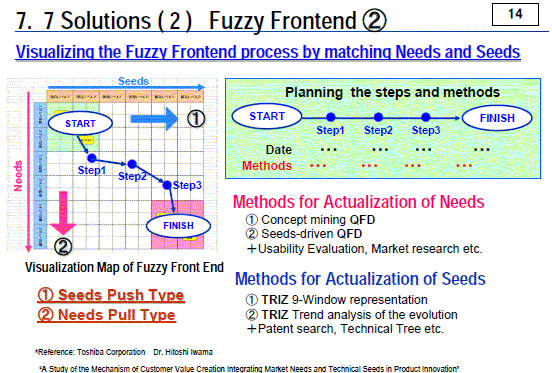
7.2 Setting theme
7.4 Fast cause analysis


7.5 Making strong patent

7.6 Cost reduction
7.7 Evaluation and experiment
7.8 Risk prevention

8. Summary

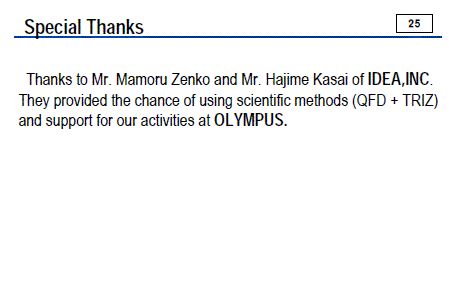

| Top of the page | Abstract | Slides | Slides PDF |
Kasai's paper |
Japan TRIZ Symp. Report (Nakagawa) |
JTS site |
Japanese page |
Last updated on Jan. 26, 2014. Access point: Editor: nakagawa@ogu.ac.jp